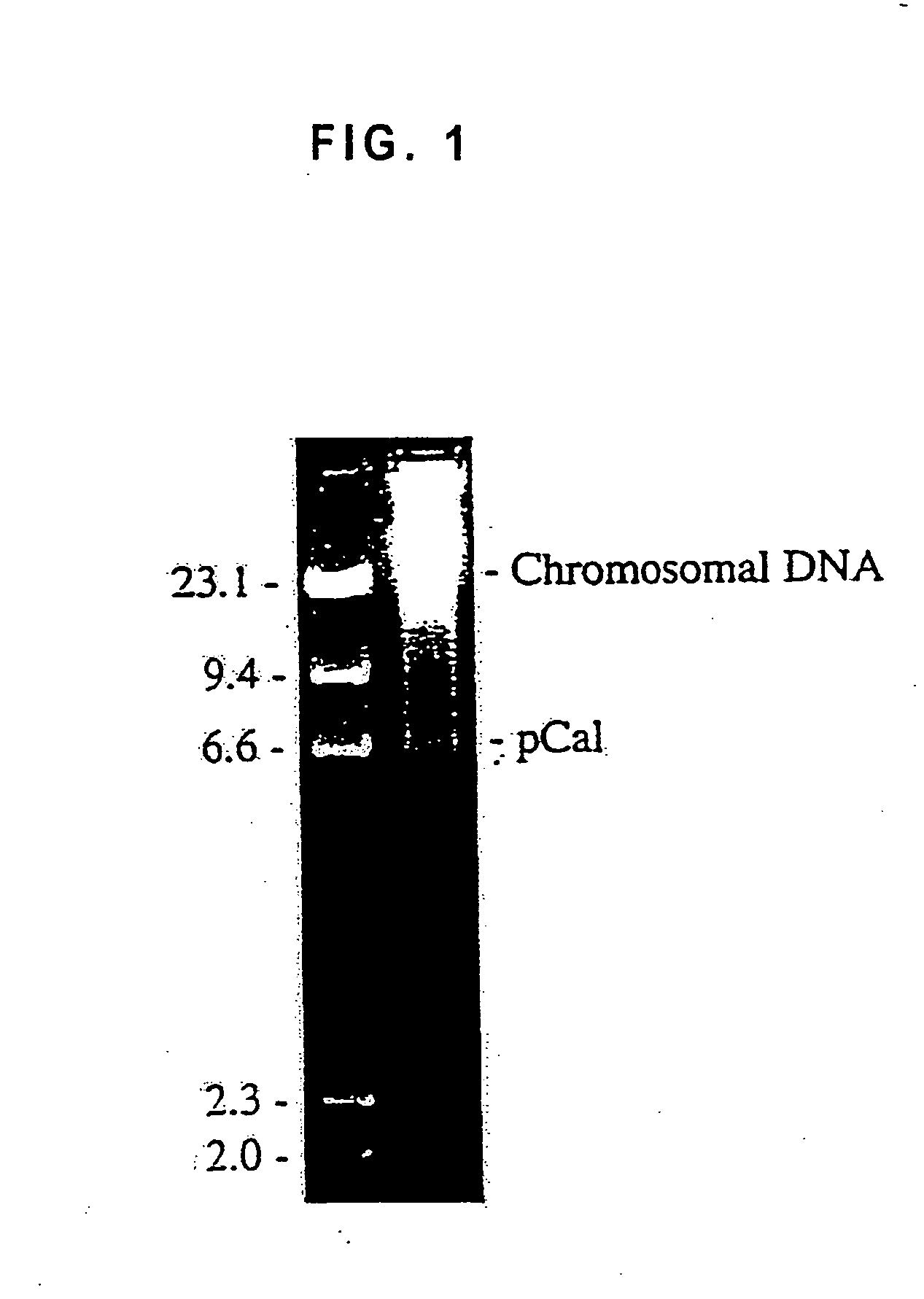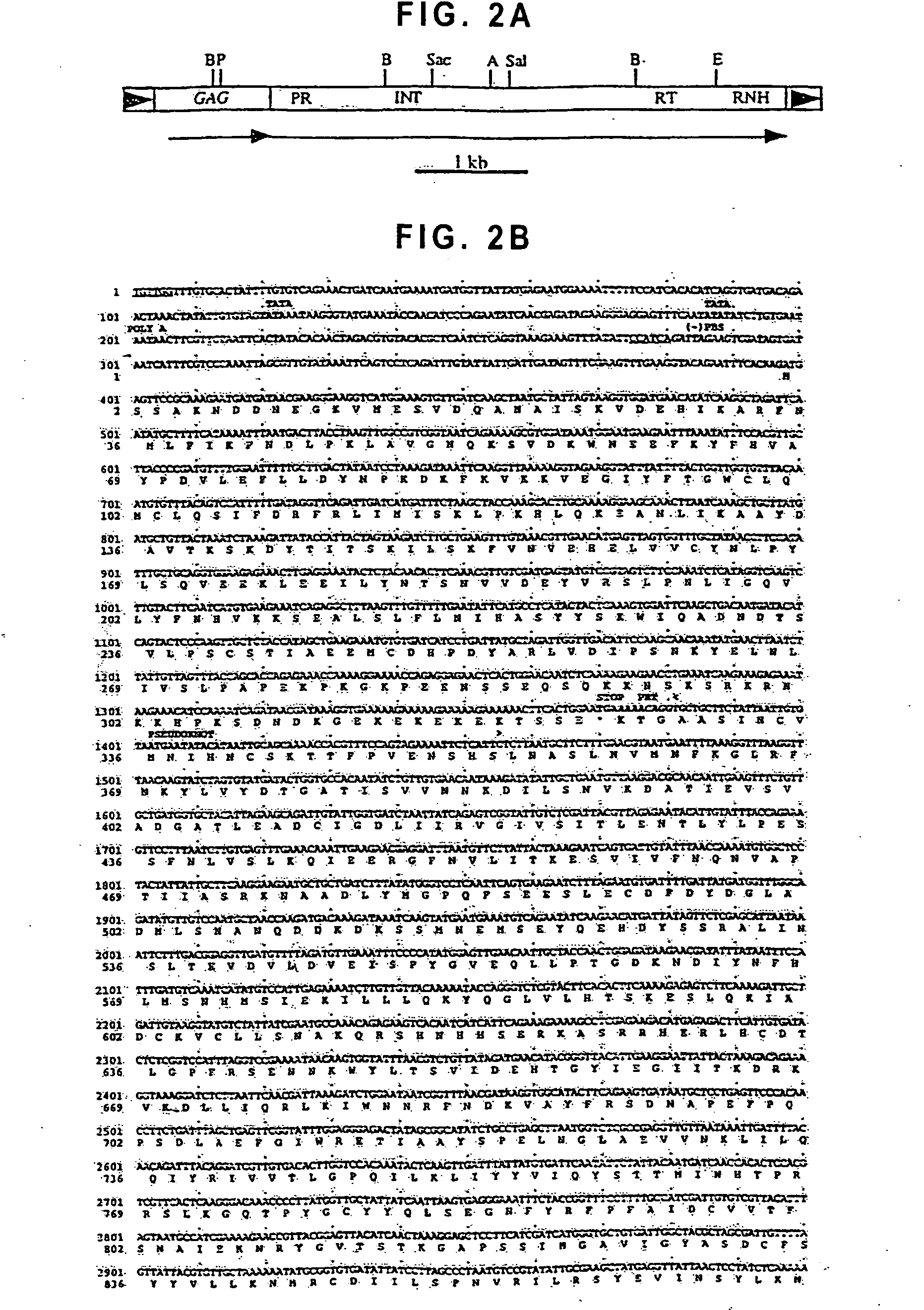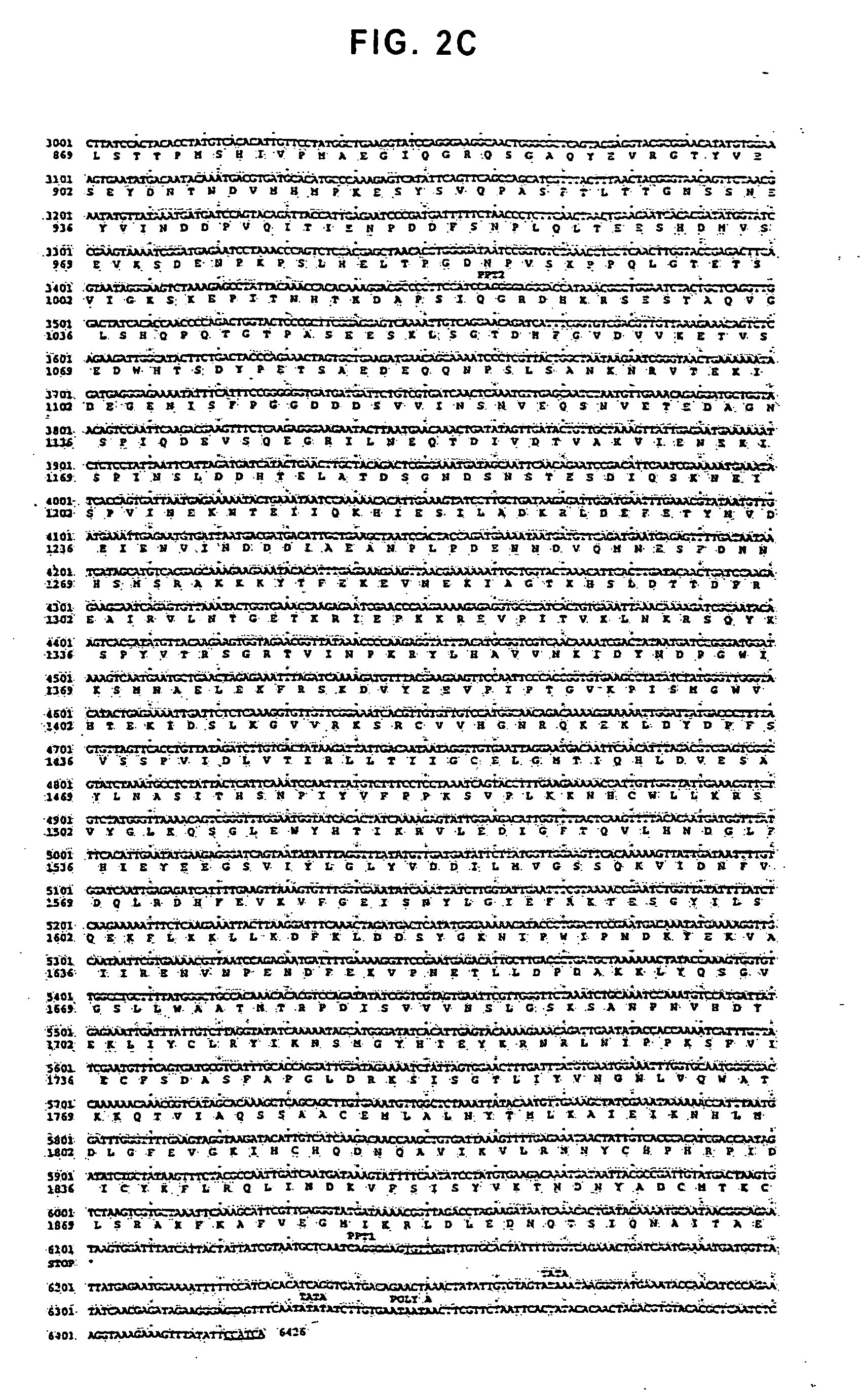Unusual retrotransposon from the yeast Candida albicans
a retrotransposon, yeast technology, applied in the field of new retrotransposon, can solve the problems of systemic infections in immuno-compromised patients, ineffective reverse transcription, and high cost of treatmen
- Summary
- Abstract
- Description
- Claims
- Application Information
AI Technical Summary
Benefits of technology
Problems solved by technology
Method used
Image
Examples
example 1
Cloning and Mapping
[0186] Some uncut genomic DNA prepared from Candida albicans strain hOG1042 was analysed on an agarose gel and a distinct band running at about 6.5 kb was found (FIG. 1). Such a band had never previously been reported from any Candida strain or species. To analyse this feature the band was extracted from an agarose gel and tested to see if it could be cut with restriction enzymes. A number of enzymes cut the band into smaller fragments which indicated that it was made up of double-stranded DNA. At this point the band was named pCal (plasmid of Candida albicans). The restriction digests allowed the construction of a simple restriction map of pCal. This work revealed that pCal was linear, with a Pst1 site about 1 kb from one end, an EcoR1 site about 1 kb from the opposite end and an Asp718 site near the middle. To permit further analysis the fragments of pCal produced with Asp7118 were cloned into the Asp7118 site of pUC19. Five clones were isolated and each was f...
example 2
Nucleotide Sequence of pCal
[0187] The five plasmids containing the pCal fragments were all sequenced from both ends in the hope of finding an identifiable feature which would provide an insight into the nature of pCal. The first remarkable features to be found were 280 bp direct repeats. The existence of these direct repeats suggested that pCal was likely to be a retrotransposon. As no other retrotransposon had ever been found existing at a high copy number in a free, linear, dsDNA form we determined the complete sequence of pCal. Therefore, the three clones of pCal carrying the Pst1 site and one of the two clones carrying the EcoR1 site were completely sequenced. In addition a region of pCal spanning the central Asp718 site used in the cloning was amplified by PCR and each strand was sequenced. This analysis confirmed that there was only one Asp718 site and that therefore the clones that we had of each half of pCal truly represented adjacent fragments.
[0188] Assembly of the 6426...
example 3
The open reading frames
[0192] Two long open reading frames were found in pCal, the first 972 bp (324aa) and the second 4728 bp (1576aa) long. Conserved motifs from the four pol proteins—protease, integrase, reverse transcriptase and RNase H—were identified in the second ORF. The order of these motifs (as listed above) places pCal within the Ty1 / copia group of retrotransposons. The pCal motifs are shown compared to those of other Ty1 / copia elements in FIG. 4. No conserved motifs were found in the first ORF but it is similar in size and position to the gag genes of other retroelements. Retroelement gag genes in general are known to be extremely variable and it is not uncommon for no identifiable conserved features to be present.
[0193] Unlike other retrotransposons, the gag and pol ORFs of pCal are in the same phase separated only by a UGA termination codon. This arrangement is similar to what has been found for mammalian type C retroviruses such as Moloney murine leukemia virus (MM...
PUM
| Property | Measurement | Unit |
|---|---|---|
| temperature | aaaaa | aaaaa |
| Temperature | aaaaa | aaaaa |
| Temperature | aaaaa | aaaaa |
Abstract
Description
Claims
Application Information
 Login to View More
Login to View More - R&D
- Intellectual Property
- Life Sciences
- Materials
- Tech Scout
- Unparalleled Data Quality
- Higher Quality Content
- 60% Fewer Hallucinations
Browse by: Latest US Patents, China's latest patents, Technical Efficacy Thesaurus, Application Domain, Technology Topic, Popular Technical Reports.
© 2025 PatSnap. All rights reserved.Legal|Privacy policy|Modern Slavery Act Transparency Statement|Sitemap|About US| Contact US: help@patsnap.com



